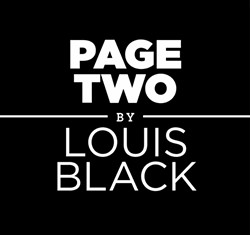Page Two
By Louis Black, Fri., Dec. 15, 1995

Déjà vu, of course, is the feeling that you've seen something before, even though you know you haven't. But what do you call it when what you've seen before hasn't yet happened?
n
From almost the first moment I set foot in downtown Portland, Oregon about a year ago, and started hearing about the history of its redevelopment, I had this eerie sense that I'd heard all this before -- that this was the story not only of Portland, but also of my hometown, Austin. But it wasn't déjà vu, quite. What I felt in Portland wasn't the ghost of Christmas past, but the ghost of Christmas future -- it was the sense that Austin today is at a point in its history that much resembles what Portland was facing 15 years ago. Or to put it another way, looking at what Portland has done in terms of city planning since 1980, you can't help but think about what Austin could do between now and the year 2010.
n
Circa 1980, Portland, Oregon was a city of just under half a million inhabitants, with a big problem at its core: a stagnant inner city and a central business district (CBD) that people weren't using any more. With traffic and parking a mess, and retail fleeing to the suburbs and malls, no one wanted to live downtown, or even visit unless they absolutely had to.
So, Portland took it on, as a community project, to radically, yet deliberately, rebuild their downtown. A freeway along the river was torn out, re-routed, and replaced with a riverside park. A huge tract in the middle of downtown was acquired, bulldozed, and turned into an open public area, Pioneer Square, which became the hub of a hugely ambitious, upgraded transit system. Pedestrian areas were created, a light rail line was cut through the heart of town, and numerous streets and lanes were designated for transit only.
It was a massive public works expense, and by all accounts, an even more massive feat of political will and consensus-building. Getting a fractious public and business community to agree on a plan is hard enough; getting overburdened taxpayers to rally behind footing the bill for such a speculative venture must have been a sight to behold.
But now, 15 years later, the investment has clearly paid off: Business downtown is booming, the streets are crowded at all hours, with retail by day, and restaurants and entertainment venues by night. Infill (the catchword of the year) is happening everywhere, with old buildings being renovated, and new ones going into every developable space in sight. Why, it's even possible, now, to live in a downtown townhouse, and have all your living necessities within easy walking or cycling distance.
Best of all, downtown Portland is a very pleasant place to hang out. A pedestrian-friendly layout, with a wealth of public spaces, makes downtown attractive, and a busy and efficient transit system makes it easy to get there, and to get around once you're there.
And all of this happened, not at the expense of the suburban communities around the city, but with their input and cooperation. Armed with a widely inclusive planning process that looks at land use throughout the metropolitan area, encourages citizen input, and then takes it seriously, Portlanders and their neighbors take pride in their city planning, and seem to view the development process as something to work with, not something to work around.
That's one story, as Mike Clark tells in more detail starting on p.18. Here's another.
Circa 1995, Austin is a city of just under a half a million people, and we, too, have a problem in our central city. The streets are clogged and not terribly pedestrian-friendly, parking downtown is a dicey proposition, and public transit service is too spotty to be a viable alternative for much of the population. We have an encouraging trend of thriving restaurants and nightlife downtown, but they're increasingly inaccessible to the sprawling suburban populace. Slowly, the life is draining out of many of our central city neighborhoods, and the Central Business District is no longer the Center of city life for most Austinites.
But the worst problem we face, I'm afraid, is the one that's the hardest to remedy. That is, we have no real consensus vision of our future, and lacking that consensus, we are essentially paralyzed by mutual mistrust.
No doubt, development is overwhelmingly the province of private enterprise. But it is government's job to provide the framework -- to lay out the guidelines on where and how development should occur, and to provide the restrictions and incentives to make it happen. Here in Austin, however, since we don't have a long-range plan with any practical application, our planners have no choice but to look at each development proposal that comes before them as an isolated case. And since the "spirit of the law" is lacking in our development code, prospective developers are constrained to spend their efforts looking for loopholes in the letter of the law. Meanwhile, those who would oppose what they see as destructive development are in an even worse position, reduced to niggling over technicalities or making futile emotional appeals.
There are lots of tantalizing plans floating around Austin -- ranging from comprehensive light rail, to reuniting the East- and Westsides by routing I-35 underground through downtown, to a plethora of Eastside redevelopment schemes -- and certainly, we have the resources to pull off any given one of them. But do we have the political will to decide what we want this city to look like in 15 years, the persuasiveness to sell such a plan to the entire community, and the patience to make it work?
Frankly, I wouldn't bet on it, but check back for a progress report in another 15 years. n








